Healthcare marketing is no longer just about running ads or having a website.
Patients today have endless choices, and their decisions are influenced by online reviews, search results, insurance directories, and even how fast your website loads. At the same time, regulations and patient trust make this industry uniquely complex.
The good news: a strong healthcare marketing strategy can help you attract new patients, retain existing ones, and build long-term credibility. The challenge is knowing where to start and which tactics actually move the needle.
This guide brings together 15 actionable healthcare marketing strategies you can try today. Each one explains what to do, why it matters, and how to implement it—whether you’re a private practice, a hospital department, or a growing network of clinics.
1. Define Your Ideal Patient Segments Before Spending a Dollar
You can’t create effective marketing for healthcare if you don’t know your audience.
Start by defining patient segments instead of marketing to “everyone.” For example, break down audiences into:
- Prospective patients searching for a provider.
- Caregivers making decisions for family members.
- Referring physicians who can send new patients.
- Employers or payers who influence coverage.
Use data from your electronic medical record (EMR), intake forms, and Google Analytics to identify patterns. A dental office might notice a large number of patients searching for “invisible braces,” while a cardiology clinic may find that older adults in nearby zip codes are their main base.
Next, dig into barriers and motivators. Are patients avoiding care because of cost, convenience, or fear? You can learn this from patient surveys, staff conversations, or by analyzing recorded calls.
Build profiles that combine demographics, challenges, and triggers. A caregiver persona might be: “Adult child seeking safe, affordable care for aging parent, researches at night, trusts reviews and physician referrals.”
By tying segments to service-line profitability, you ensure your healthcare marketing plan focuses on the patients who drive both growth and outcomes.
2. Set SMART Goals and KPIs That Align With Patient Outcomes
Your goals must connect directly to measurable patient and business results.
Instead of chasing likes or impressions, use the SMART method (Specific, Measurable, Achievable, Relevant, Time-bound).
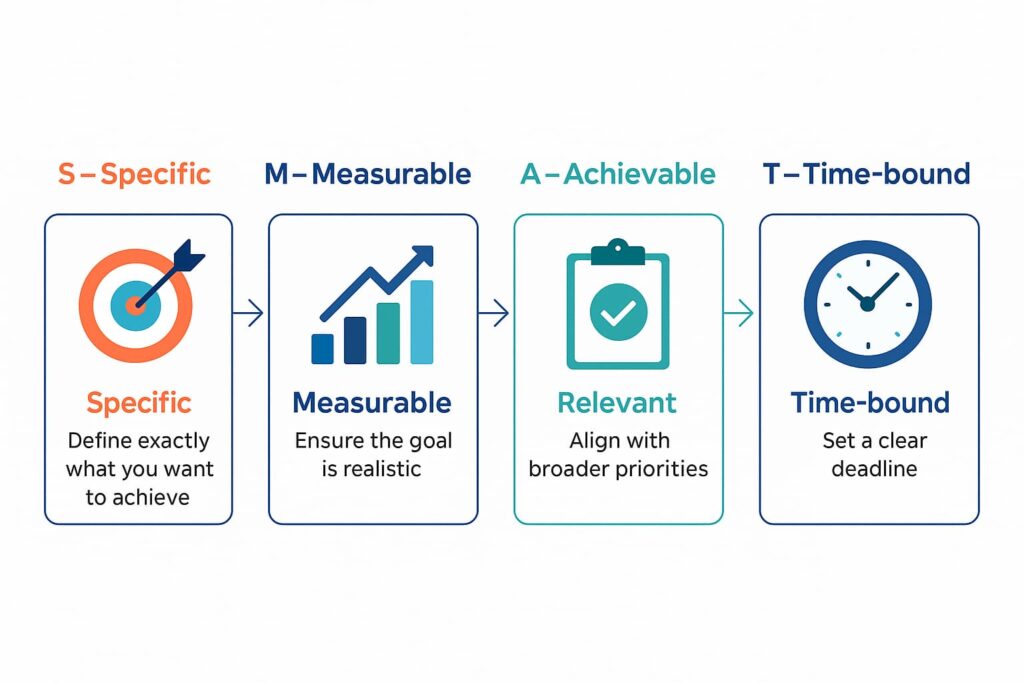
Examples include:
- Increase new patient appointment requests by 15% in six months.
- Reduce no-show rates from 18% to 12% by year-end.
- Grow five-star Google reviews by 40% in 12 months.
Then, map key performance indicators (KPIs) through the funnel:
- Awareness (organic traffic, local search rankings).
- Consideration (calls, chats, form submissions).
- Conversion (booked appointments, completed visits).
- Retention (repeat visits, review volume, patient referrals).
Tools like Google Analytics 4 and Google Business Profile Insights let you monitor performance. If you run paid campaigns, import offline conversions like confirmed visits so platforms optimize toward real patients, not just clicks.
Finally, align goals with patient outcomes. For instance, a diabetes program could track enrollments as a core KPI.
3. Build Patient Trust With E-E-A-T-Compliant Content
In healthcare, content credibility directly affects patient trust and search visibility.
Search engines treat healthcare content under the “Your Money or Your Life” (YMYL) category, which means higher standards apply. That’s where Google’s E-E-A-T framework—Experience, Expertise, Authoritativeness, and Trustworthiness—comes in.
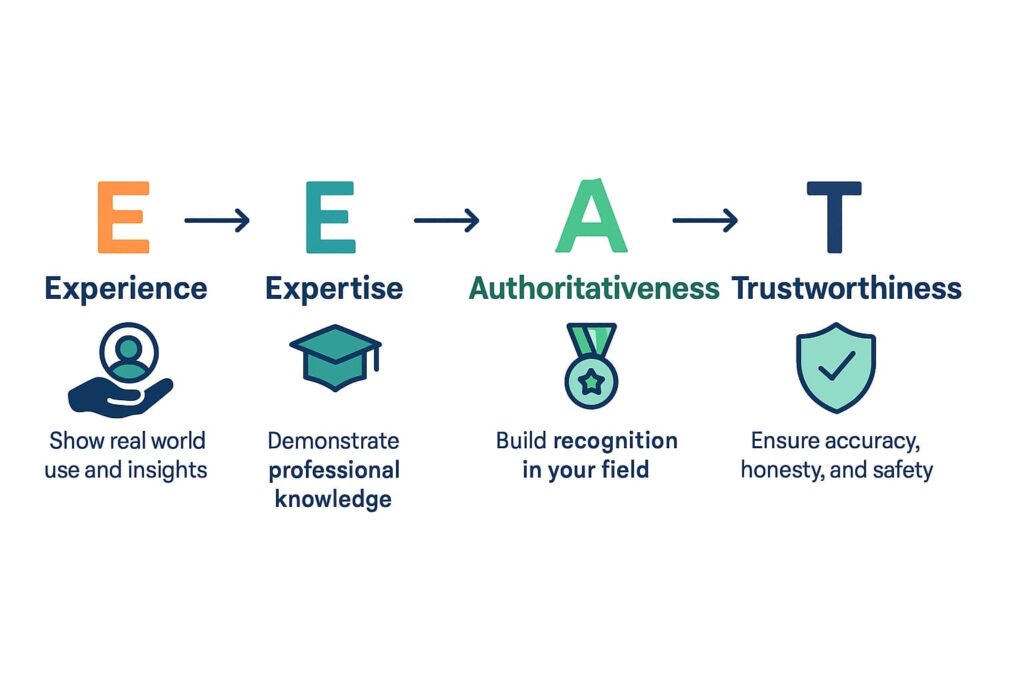
Here’s how to implement it:
- Add medical bylines (e.g., MDs or RNs) and reviewer bios to clinical content.
- Include references and citations to reputable medical sources.
- Set up editorial workflows with fact-checking and update schedules.
- Add patient disclaimers where appropriate.
For example, a blog about heart health should note the physician reviewer, cite relevant studies, and carry a clear disclaimer that it’s educational only. This reassures both Google and patients.
By embedding E-E-A-T practices, you raise authority, reduce misinformation risk, and signal professionalism to patients evaluating care options.
4. Optimize Your Website for Speed, UX, and Accessibility
Your website is often the first impression patients get—if it’s slow or inaccessible, you lose them.
Focus on three pillars:
- Speed: Use Google PageSpeed Insights to test load times. Compress images, leverage caching, and ensure your hosting can handle spikes.
- UX: Make booking obvious on every page, minimize form fields, and add click-to-call buttons for mobile users.
- Accessibility: Follow WCAG guidelines. Add alt text to images, ensure keyboard navigation, and check color contrast.
Consider patient-specific needs. For instance, senior patients may need larger fonts and simple navigation, while multilingual areas should offer translations.
Accessibility isn’t just ethical—it expands reach and protects you from compliance risks. Combined with speed and usability improvements, it turns your website into a 24/7 front desk for your practice.
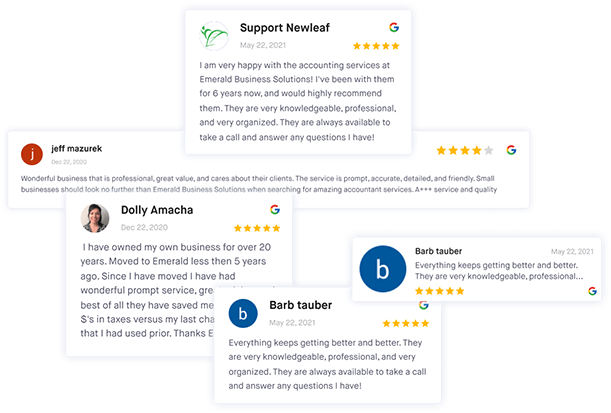
Improve your online reputation
Use ReviewsOnMyWebsite to manage and improve your practice's online reputation with ease.
5. Dominate Local SEO for Every Service Line and Location
Most patients search “near me”—if you don’t show up, you don’t exist.
Start by optimizing your Google Business Profile (GBP):
- Select the right categories for each service line.
- Add high-quality photos of staff and facilities.
- Keep hours, phone numbers, and services accurate.
Create location-specific landing pages with unique content, not copy-pasted templates. A dermatology practice with offices in Dallas and Houston should have separate pages tailored to each city’s local search terms.
Don’t forget physician or provider profile pages. Add schema markup for “Physician” or “MedicalClinic” to help Google recognize expertise and services.
Finally, clean up citations across directories like Healthgrades, Zocdoc, and insurance portals. Inconsistent names or addresses confuse both patients and search engines.

By combining GBP optimization, directory management, and local landing pages, your healthcare marketing strategy ensures visibility in the searches that matter most.
6. Publish Content That Educates and Converts Patients
Educational content drives trust—and conversions—when tied to patient intent.
Focus on creating content types patients actually use:
- Condition and treatment pages that explain options in plain language.
- FAQs addressing insurance, recovery times, or risks.
- Patient stories that show empathy and results (with consent).
- Interactive tools like symptom checklists or cost estimators.
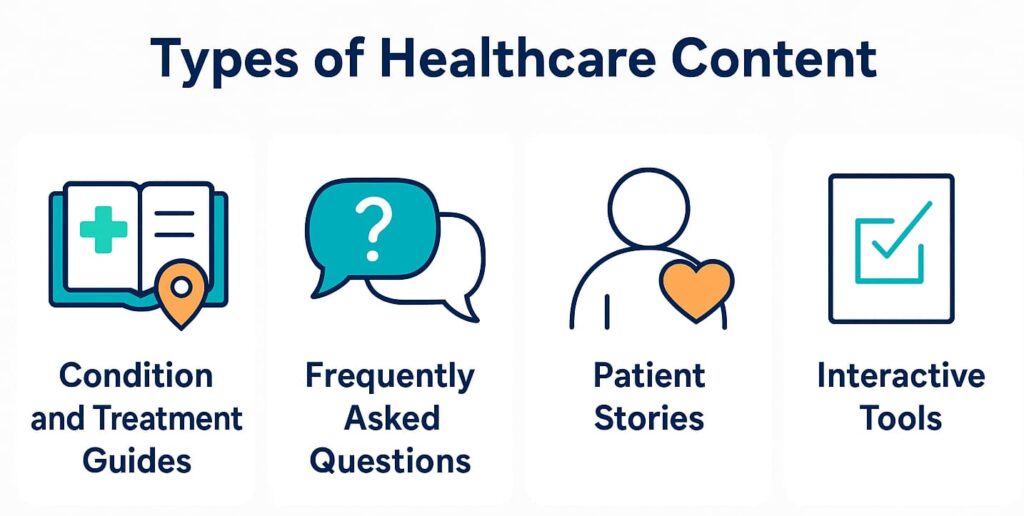
For example, a fertility clinic could publish an in-depth guide on IVF success rates, reviewed by a physician, with a simple call-to-action (CTA) to schedule a consultation.
Follow editorial standards: keep readability around a 7th–8th grade level, update annually, and add disclaimers when needed.
This combination of accuracy, empathy, and action turns your website into both an education hub and a patient acquisition tool.
Ihor Lavrenenko, the SEO manager at Pesky Marketing, explained how his agency used content to build trust for a cosmetic dermatology practice:
"In our clients' cosmetic dermatology practice, the hurdle was trust at the first click. Patients searched "acne scar before and after" or "Botox NYC" and landed on a plain service page.
We built dedicated before and after pages for each procedure and concern. Each set used the same lighting and angle.
We listed the time between photos and what treatment was done. Every patient signed a specific photo release. We left out names, tattoos, and metadata.
Then we measured. We tagged each page, tracked calls and forms, and watched booked consults in our scheduling system.
In 12 weeks, consult requests from those pages rose 24%, and our front desk spent less time resetting expectations because the results timeline was already clear. This stayed compliant because consent covered online use and privacy risks."
7. Structure SEO Campaigns Around Patient Search Intent
SEO in healthcare isn’t about chasing volume—it’s about answering patient questions.
Start with keyword research tools like Google Keyword Planner or healthcare SEO best practices. Group queries into clusters by intent:
- Informational (“What is sciatica?”).
- Navigational (“orthopedic surgeon near me”).
- Transactional (“book pediatrician appointment online”).
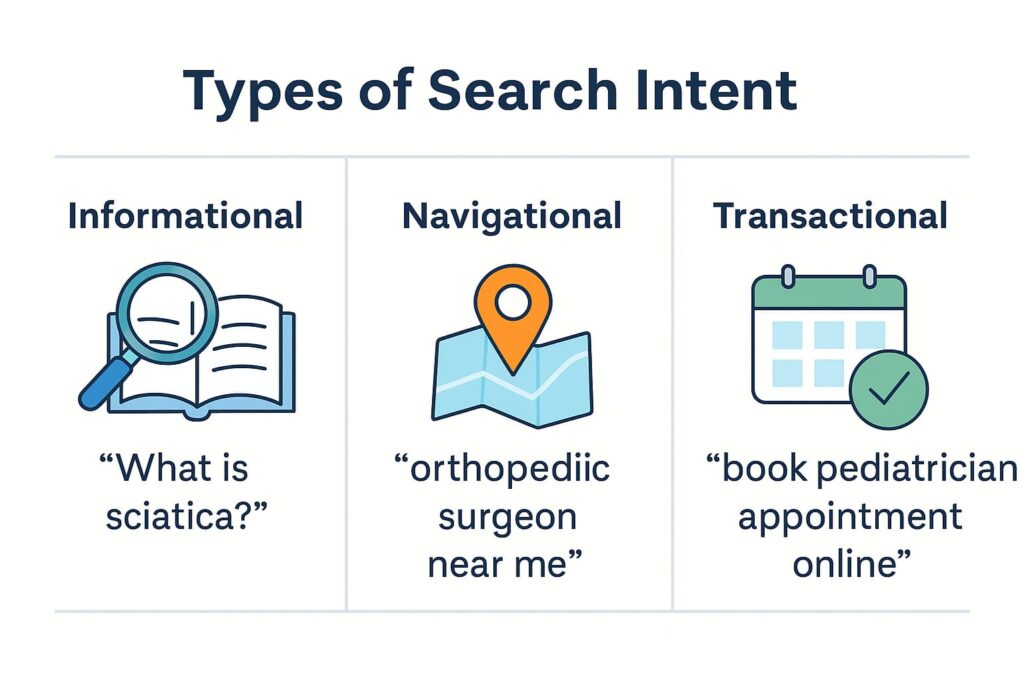
Build topical hubs around service lines. For example, an orthopedic practice might create a “Knee Pain Center” hub with articles on knee pain causes, treatment options, and surgery recovery—each linking to a booking page.
Use schema markup for medical entities and FAQs, and build internal links between informational content and service pages.
8. Launch Paid Search Campaigns With Capacity-Aware Targeting
Ads should fill your schedule efficiently, not waste budget.
Run campaigns around specific service lines instead of broad terms. A dentist advertising “emergency tooth extraction near me” will see better ROI than one bidding on “dentist.”
Set geo-radius targeting so ads only show to patients within a realistic driving distance. Use negative keywords to filter out irrelevant searches, such as “free” or “home remedies.”
Most importantly, import offline conversions. If you know which calls or form fills resulted in completed appointments, you can train Google Ads or Meta Ads to optimize for real revenue.
By aligning ads with service-line capacity and patient value, you ensure digital marketing for healthcare delivers measurable growth without overspending.
9. Build a Reputation Engine With Reviews and Responses
Reviews influence nearly every patient decision.
According to our State of Online Reviews report, 92.5% of buyers read reviews in the past year, and more than 78% won’t consider a business rated below four stars. For healthcare, the stakes are even higher.
Build a system to request reviews after visits. Train staff to ask patients in person, send follow-up emails, or use automated tools.
You can use ReviewsOnMyWebsite to set up automated email and SMS review request campaigns. And schedule follow-up reminders to increase the chances of patients leaving reviews.
Platforms like Google, Yelp, and Healthgrades carry the most weight—86.2% of consumers use Google specifically.
Equally important is how you respond. A thoughtful response to a negative review builds trust—78.3% of consumers say it makes them more likely to choose a business. Use templates, but personalize them.
Pro tip: You can read and reply to all the reviews your business gets across different platforms from ReviewsOnMyWebsite’s review feed. There’s even an option to generate personalized review replies using AI.

Maintain directory hygiene by checking doctor review sites and insurance portals. Outdated or conflicting data damages both credibility and SEO.
Reputation management isn’t optional—it’s the digital word of mouth that determines whether patients walk through your doors.

Improve your online reputation
Use ReviewsOnMyWebsite to manage and improve your practice's online reputation with ease.
10. Generate Physician Referrals With Structured Outreach
Referrals are a hidden growth channel most practices underutilize.
Referring physicians can be a steady source of patients, but only if you make the process easy and rewarding. Start by developing a referral kit that includes service overviews, provider bios, and contact instructions.
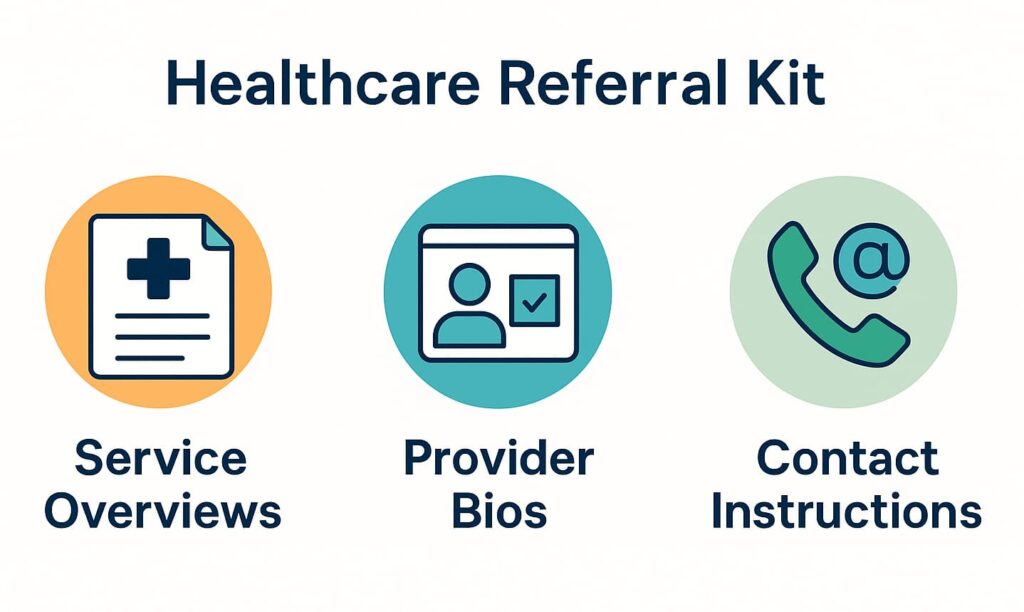
Host CME (continuing medical education) webinars or lunch-and-learn sessions to build credibility with peers. Provide a simple referral portal or form that integrates with your CRM so referring providers don’t face friction.
Track referral volume and conversion rates like you would paid campaigns. If a single orthopedic surgeon sends five new patients a month, invest in strengthening that relationship.
11. Automate Patient Communication With HIPAA-Safe Email and SMS
Timely reminders and follow-ups reduce no-shows and improve care.
Use automation to deliver:
- Appointment reminders with rescheduling links.
- Post-visit follow-ups with instructions and review requests.
- Recall campaigns encouraging preventive visits.
Always use HIPAA-compliant platforms. Collect consent, provide opt-outs, and avoid personal health information (PHI) in subject lines.
For example, a dermatology clinic might send a recall sequence: “It’s been 12 months since your last skin check—book your appointment online today.” This is proactive care that also drives revenue.
Done right, automation turns one-time patients into long-term relationships.
Max Marchione, the co-founder of Superpower, used automated emails to educate patients:
"At Superpower, we started sending patients health tips based on their test results. People liked it, and our return rate stayed above 85% each quarter.
The key is to give useful information, not just reminders. When you teach them something, they feel more valued and are more likely to come back."
12. Leverage Social Media Without Risking Compliance
Social channels amplify trust—but require clear guardrails.
Choose platforms that match your audience. Instagram works well for wellness clinics, while LinkedIn is stronger for B2B partnerships like employers and payers.
Follow strict policies: never share protected health information (PHI), avoid before/after photos without written consent, and train staff on posting rules. Create escalation protocols for negative comments or misinformation.
Content ideas include behind-the-scenes looks at providers, myth-busting reels, or seasonal health tips. For example, a pediatrician might post short back-to-school wellness reminders timed for August.
Handled correctly, social media builds familiarity and trust, making patients more likely to book when the need arises.
13. Map and Improve the Patient Journey Across Touchpoints
Removing friction at every step boosts both satisfaction and conversions.
Map the journey from search to post-visit:
- A patient searches for “urgent care near me.”
- Lands on a website with a clear booking button.
- Schedules online and receives confirmation via SMS.
- Visits a clinic and gets prompt check-in.
- Receives a post-visit email with instructions and review request.
Identify friction points. Are patients dropping off at the form stage? Add a click-to-call option. Are wait times too long? Adjust scheduling buffers.
Improving the journey not only drives conversions but also leads to positive reviews and repeat visits.

Improve your online reputation
Use ReviewsOnMyWebsite to manage and improve your practice's online reputation with ease.
14. Track Calls and Attribute Revenue to Campaigns
Calls are often the biggest conversion point in healthcare—but rarely tracked properly.
Use call tracking software to assign unique numbers by campaign or landing page. This lets you see which channels generate high-value patients.
Advanced tools can analyze call recordings to identify appointment bookings versus general inquiries. Feed this data back into platforms like Google Ads so algorithms optimize for patients who actually schedule care.
For example, a dental office may find Facebook ads generate many calls but few bookings, while search ads lead to higher conversion rates. That insight allows budget reallocation.
Without attribution, you’re guessing. With it, you can scale campaigns that truly drive revenue.
15. Win Visibility in AI Overviews and Answer Engines
As AI results take over search, you need to optimize beyond traditional SEO.
AI Overviews in Google, as well as tools like ChatGPT and Perplexity, now summarize answers to health-related queries. To appear in these, focus on structured, authoritative content.
Steps include:
- Cover common patient questions in detail.
- Use FAQ schema and structured data.
- Ensure brand and physician names are clearly tied to topics.
- Publish content in a way that’s quotable and verifiable.
Track your presence using emerging AEO (Answer Engine Optimization) tools. Monitor whether your brand appears when patients search for conditions or services in AI platforms.
FAQs About Healthcare Marketing
What is a healthcare marketing strategy?
A healthcare marketing strategy is a structured plan to attract, engage, and retain patients. It combines channels like SEO, paid ads, reviews, referrals, and patient communications to support both growth and better health outcomes.
What are the most effective healthcare marketing strategies in 2025?
The most effective approaches include optimizing local SEO, managing reviews, running capacity-aware paid ads, and leveraging automation. Newer areas like AI search visibility are also shaping marketing trends in healthcare.
How do reviews impact patient decisions?
Reviews are critical—92.5% of consumers read them, and 78% won’t consider a business rated below four stars. For providers, this makes online reputation management for doctors a must-have process.
Do small practices need digital marketing for healthcare?
Yes. Even solo practices need visibility on Google Maps, accurate directory listings, and patient-friendly websites. Simple healthcare marketing ideas like posting on social media or asking for reviews can make a big impact.
How should we respond to negative reviews?
Respond quickly (within 1–3 days) and professionally. Avoid disclosing protected health information, apologize where appropriate, and offer an offline resolution path. See these negative review response examples for templates.
What tools help manage online reviews?
You can use a tool like ReviewsOnMyWebsite to streamline requests, responses, and reporting. This matters since 78% of businesses now use software to manage reviews.
Future-Proof Your Healthcare Marketing Strategy
Healthcare marketing is evolving quickly. Patients expect seamless digital experiences, trustworthy content, and rapid responses to reviews. At the same time, new technologies like AI search are rewriting the rules.
By applying these 15 actionable strategies—grounded in patient trust, regulatory compliance, and measurable outcomes—you can stay ahead of healthcare marketing trends and build sustainable growth.
The next step is simple: pick three tactics to implement in the next quarter and measure results closely. Consistency is what turns strategies like this into long-term patient loyalty.




